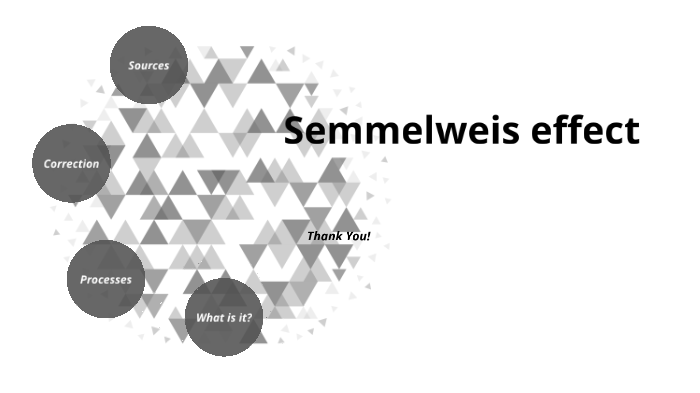Introduction
In the realm of decision-making, the Semmelweis Effect stands as a compelling mental model that sheds light on the propensity of individuals and groups to reject new information or ideas that challenge their existing beliefs or practices. Coined after the Hungarian physician Ignaz Semmelweis, this phenomenon captures the tendency to dismiss valuable insights due to deep-rooted biases and psychological barriers. Understanding the Semmelweis Effect is crucial for fostering better decision-making processes and avoiding irrational choices that can have significant consequences. In this blog post, we will explore the Semmelweis Effect, examine its prevalence in various contexts, delve into the psychological biases that contribute to its occurrence, and provide practical strategies to overcome this cognitive trap.
Defining the Semmelweis Effect and Its Relevance
The Semmelweis Effect refers to the resistance or refusal to accept new evidence or ideas, often resulting in the rejection of potential breakthroughs or innovation. It manifests when individuals or groups cling to established beliefs, practices, or policies, dismissing contrary information even when it is supported by strong evidence. This mental model is particularly relevant in decision-making as it impedes progress, stifles creativity, and hinders the adoption of effective solutions.
The Semmelweis Effect is deeply anchored in human psychology. As social creatures, we tend to seek confirmation and validation from others, placing great importance on conformity. The fear of being perceived as different or deviating from the norm can lead to a resistance to change and a reluctance to question established beliefs. Furthermore, our cognitive biases, such as confirmation bias, availability bias, and status quo bias, reinforce the Semmelweis Effect by filtering information and influencing our decision-making processes.
Examples of the Semmelweis Effect
- Personal Life Decision: Imagine an individual who has followed a particular diet plan for years, firmly believing it is the healthiest option. Despite emerging scientific evidence supporting a different approach, this person refuses to consider the new information due to a deep attachment to their existing beliefs. Consequently, they miss out on the opportunity to improve their health and well-being.
- Business Scenario: In the business world, the Semmelweis Effect often arises when companies cling to outdated practices or refuse to adapt to changing market conditions. Kodak, a once-dominant player in the photography industry, serves as a prime example. Despite early recognition of the shift towards digital photography, Kodak’s leadership dismissed the significance of the trend, as it contradicted their long-established film-based business model. This resistance ultimately led to the company’s decline and bankruptcy.
- Public Policy-Making: The Semmelweis Effect is also prevalent in public policy-making. Governments may resist implementing evidence-based policies that challenge long-standing ideologies or powerful interest groups. For instance, consider a government that is hesitant to address climate change due to the influence of fossil fuel industries, even in the face of overwhelming scientific consensus. This resistance to new information can have far-reaching consequences for the environment and future generations.
Psychological Biases and Underpinnings
Several psychological biases contribute to the occurrence of the Semmelweis Effect. Confirmation bias, one of the most pervasive cognitive biases, drives individuals to seek and interpret information that supports their existing beliefs while disregarding conflicting evidence. Availability bias influences decision-making by giving disproportionate weight to readily available information, such as personal experiences or vivid anecdotes, even if they are not representative of the broader reality. The status quo bias fosters a preference for maintaining the current state of affairs, making individuals resistant to change or alternative approaches.
Moreover, the Semmelweis Effect is exacerbated by the Dunning-Kruger effect, which refers to individuals’ overconfidence in their own knowledge and competence, often resulting in a dismissal of contradictory information. The sunk cost fallacy, the tendency to persist with a failing course of action due to prior investments, further entrenches the Semmelweis Effect by inhibiting individuals from cutting their losses and considering alternative paths.
Identifying and Overcoming the Semmelweis Effect
Recognizing the Semmelweis Effect within ourselves and others is crucial for mitigating its detrimental impact on decision-making. To avoid succumbing to this cognitive trap, consider the following strategies:
- Embrace Intellectual Humility: Cultivate a mindset that acknowledges the limits of your knowledge and remains open to new perspectives and information. Foster a willingness to challenge your own beliefs and seek out evidence that may contradict them.
- Encourage Diverse Perspectives: Actively seek out diverse opinions and viewpoints, valuing dissent and constructive criticism. Surrounding yourself with individuals who challenge your ideas can foster a more robust decision-making process.
- Engage in Active Information Seeking: Go beyond your comfort zone and actively seek information from reputable sources, examining both sides of an argument. Be mindful of your own biases and consciously expose yourself to differing viewpoints.
- Foster a Culture of Learning: In organizational settings, create an environment that encourages continuous learning and rewards adaptability. Promote a culture that values experimentation, embraces feedback, and encourages the exploration of new ideas.
Conclusion
The Semmelweis Effect represents a critical mental model that sheds light on our innate resistance to change and the rejection of information that challenges our established beliefs. By understanding the prevalence of this cognitive trap in decision-making, we can equip ourselves with the tools to overcome it. Through intellectual humility, embracing diverse perspectives, actively seeking information, and fostering a culture of learning, we can navigate the complexities of decision-making more effectively. By actively avoiding the Semmelweis Effect, we open ourselves to new possibilities, innovation, and progress, both in our personal lives and in society as a whole.
